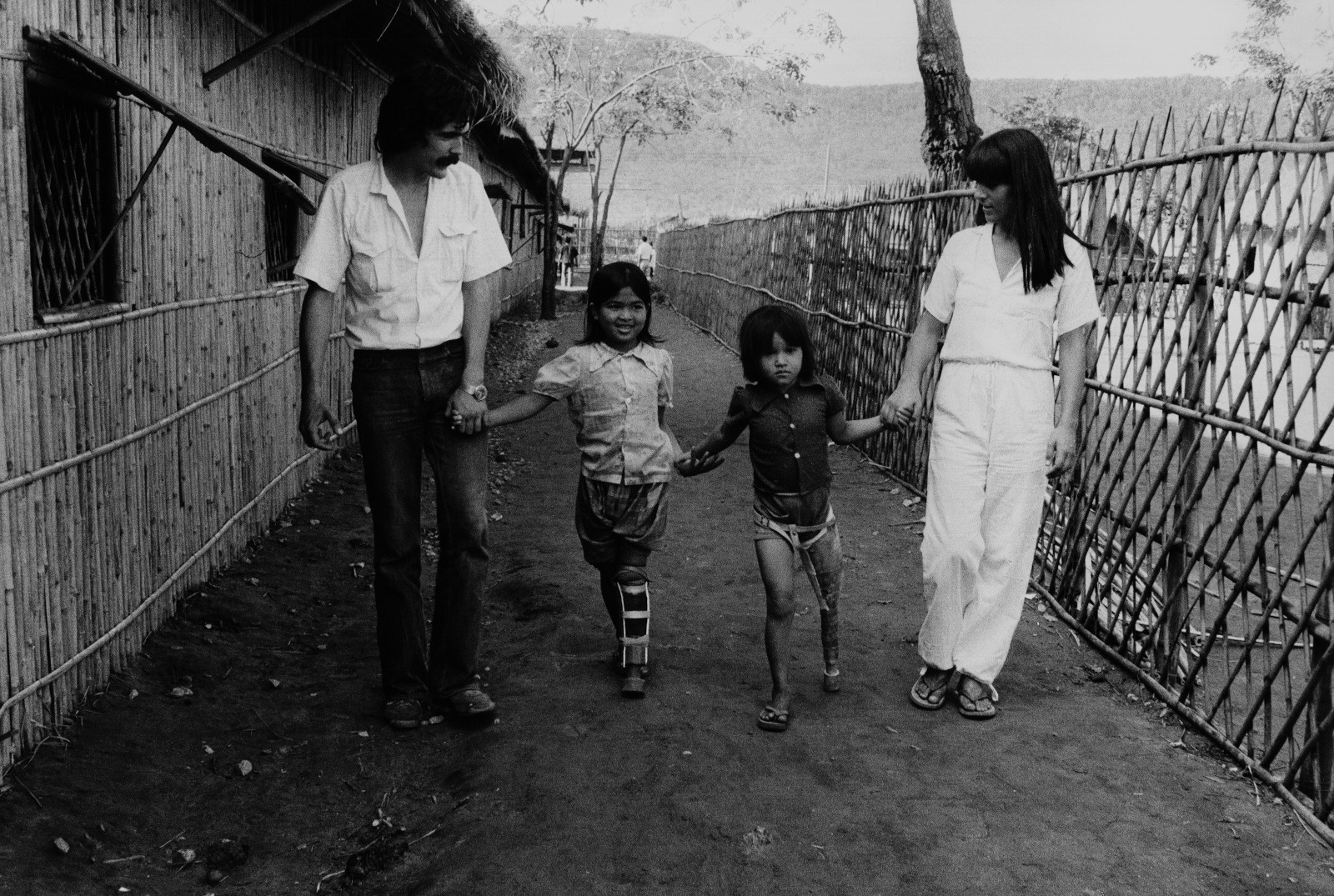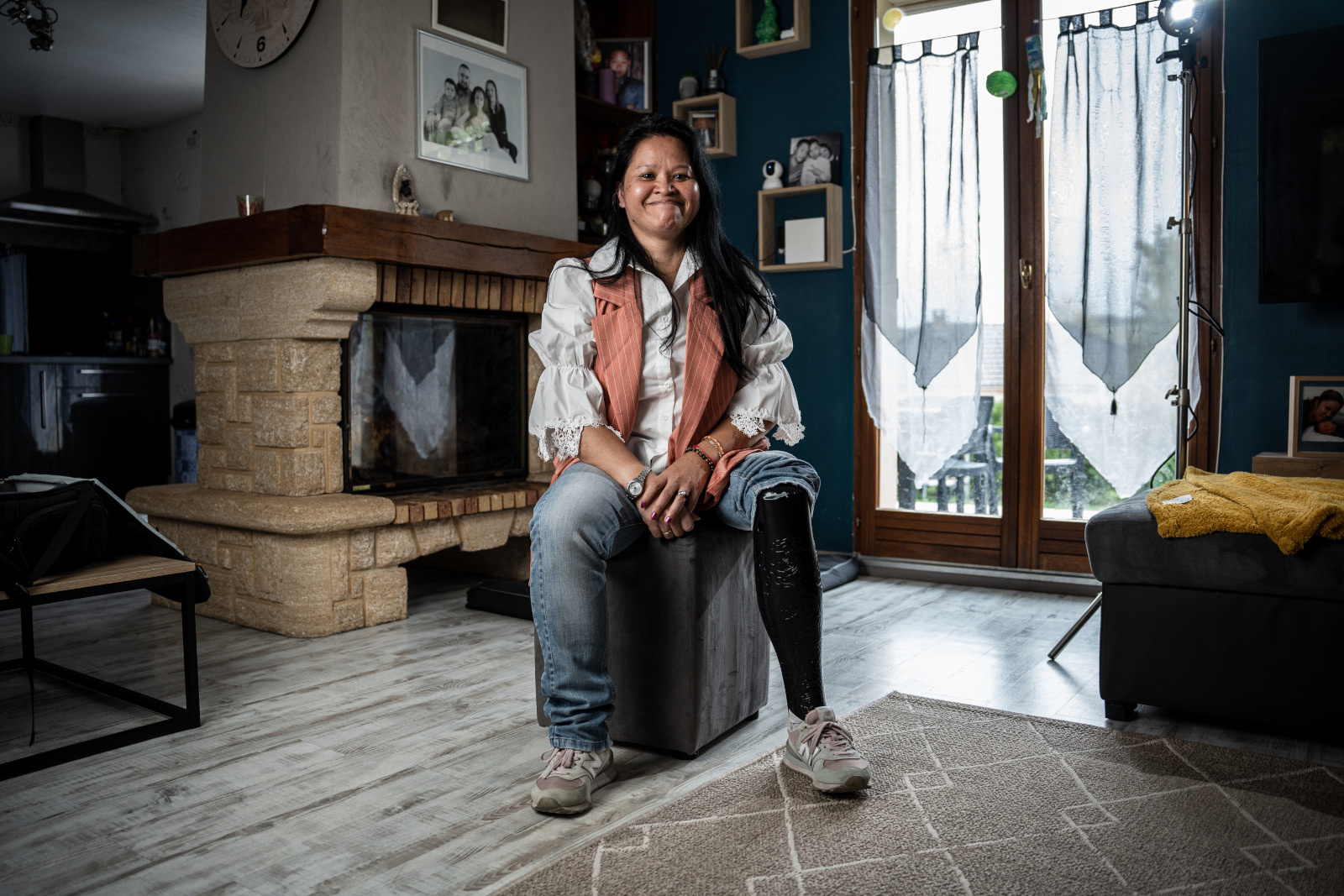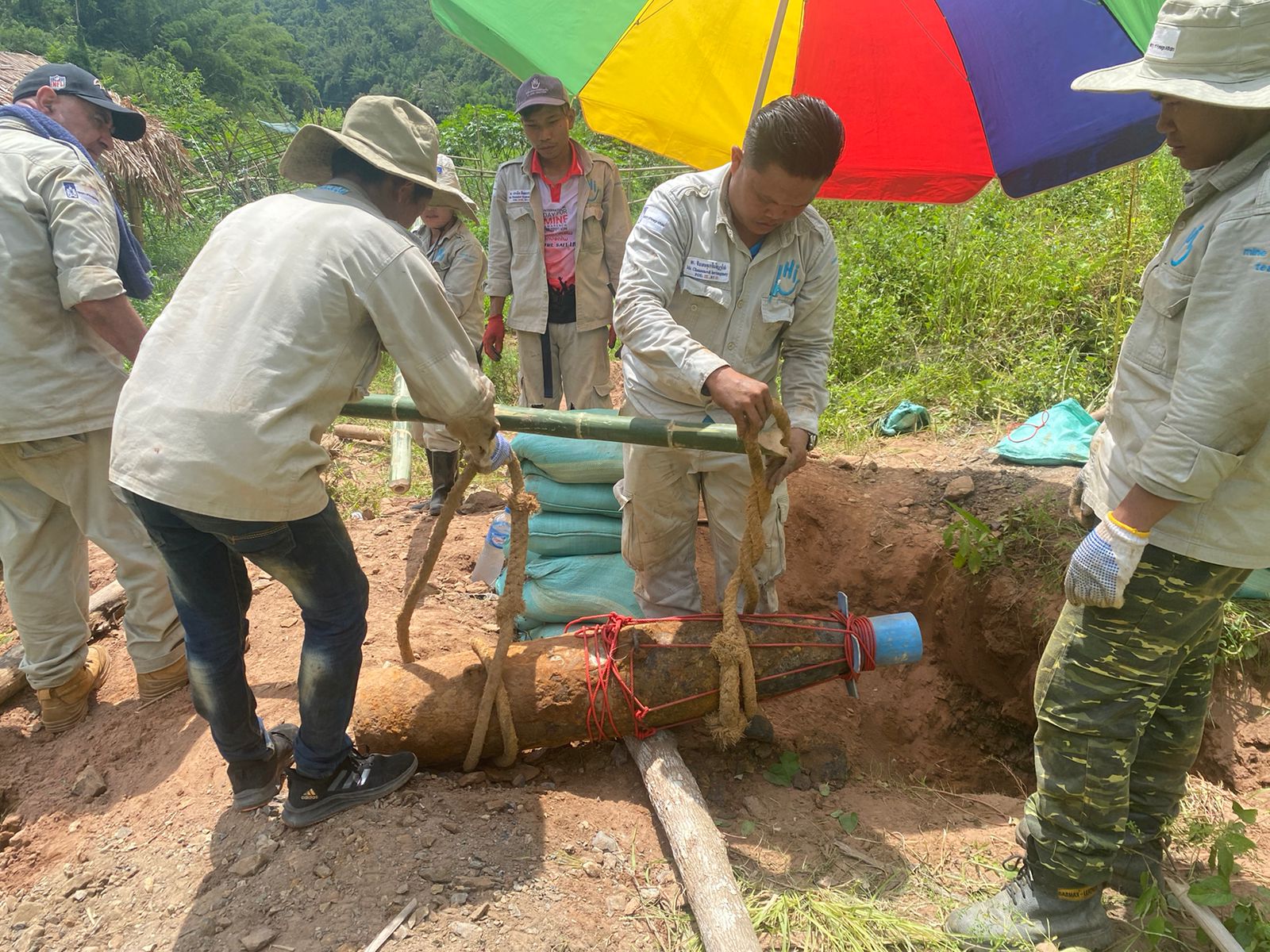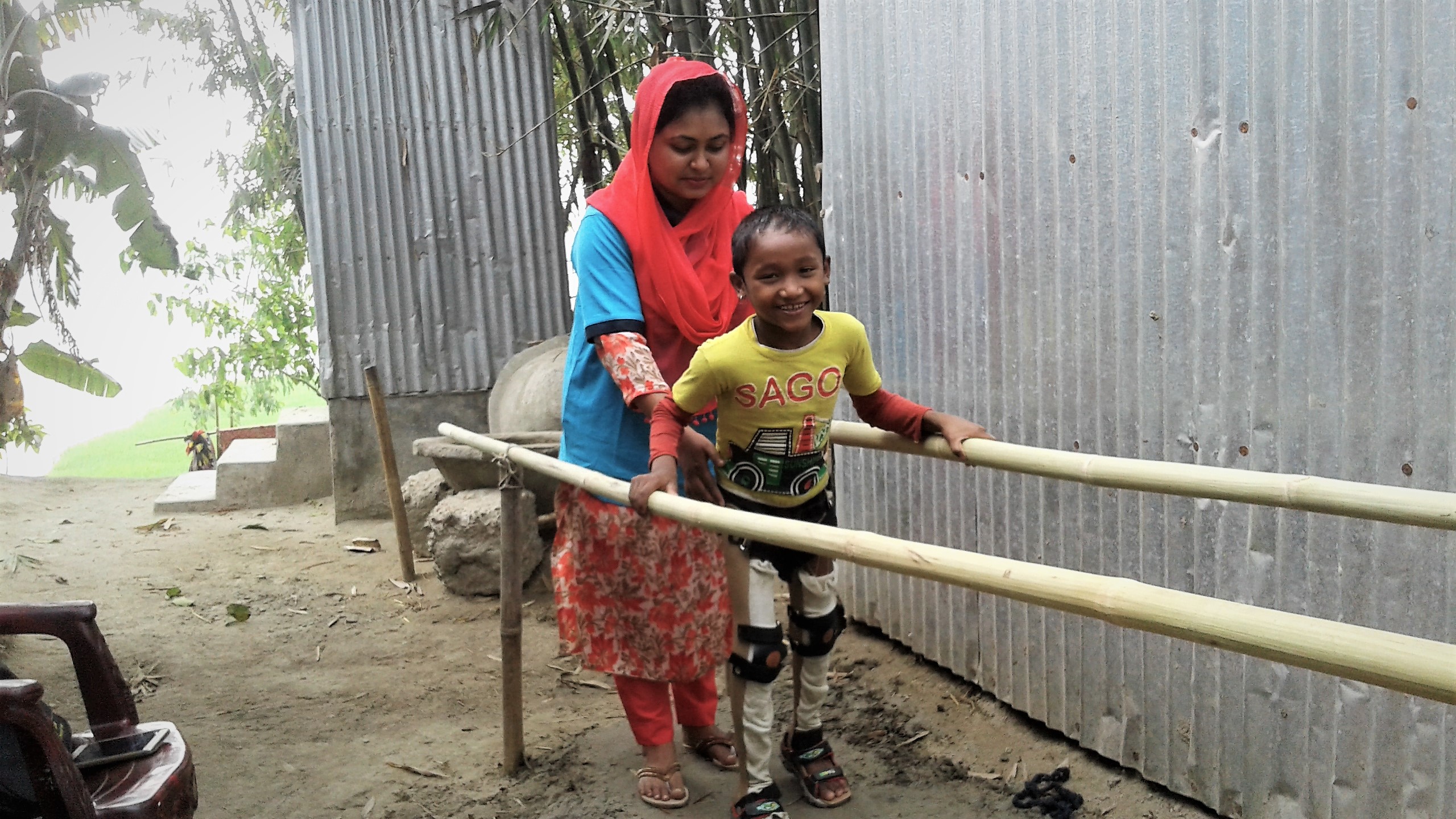It's a historic symbol for HI!
Thailand, 1982. Khao I Dang camp was home to 160,000 Cambodian refugees who had fled the Khmer Rouge regime. Among them were thousands of amputees, most of them landmine victims.
 To help these people, two French doctors, Jean-Baptiste Richardier and Claude Simonnot, decided to design simple orthopaedic devices made from inexpensive local materials that people were used to working with. The aim was to get amputees back on their feet as quickly as possible after the operation.
To help these people, two French doctors, Jean-Baptiste Richardier and Claude Simonnot, decided to design simple orthopaedic devices made from inexpensive local materials that people were used to working with. The aim was to get amputees back on their feet as quickly as possible after the operation.
“The aim is to get the person back on their feet as quickly as possible after amputation. Their first steps can be taken between parallel bamboo bars, then with a pair of bamboo crutches for a child. A few weeks later, the person is fitted with a prosthesis made of leather, wood and steel, all materials that can still be found locally but are more durable.” Isabelle Urseau, HI Rehabilitation Technical Director
This is how and why the first temporary bamboo prostheses were produced. Bamboo was used for the lower part of the prosthesis, known as the "pylon". The upper part was made of plaster strips reinforced with wood glue, and this part was regularly renewed. The whole prosthesis was lightweight, making it easier for the wearer to take their first steps.
HI is still in Cambodia today. Our teams run rehabilitation projects, mainly at the Kampong Cham rehabilitation centre.
Emilie, one of the first person to be fitted with a bamboo prosthesis by HI
 In 1982, as she was fleeing from the Khmer Rouge with her family, Emilie lost her left leg in a landmine explosion. Teams from HI, a very young NGO at the time, met her in the Khao I Dang camp and offered to fit her with a bamboo prosthesis.
In 1982, as she was fleeing from the Khmer Rouge with her family, Emilie lost her left leg in a landmine explosion. Teams from HI, a very young NGO at the time, met her in the Khao I Dang camp and offered to fit her with a bamboo prosthesis.
"In the camp, there was a workshop making a lot of noise and as soon as I was able to get around on crutches, I went to see what was going on there. In the workshop, I saw hammers, pieces of bamboo and iron rods. One of the workers saw me and explained: "We’re making bamboo prostheses for children like you. They’ll be used for people who have been amputated because of landmines.”
I ran back to my parents, shouting: "Mummy, there’s a workshop where they are making legs for children like me!”
It can be used to help move huge bombs…
 HI's demining teams in Laos were recently alerted to the presence of a huge aerial bomb close to the river outside a small village in Phongsaly province, It was clearly a bomb dropped by the US army during the Vietnam War. Our colleagues used bamboo stalks to carry the bomb out of the village so it could be safely destroyed.
HI's demining teams in Laos were recently alerted to the presence of a huge aerial bomb close to the river outside a small village in Phongsaly province, It was clearly a bomb dropped by the US army during the Vietnam War. Our colleagues used bamboo stalks to carry the bomb out of the village so it could be safely destroyed.
Since 2006, HI teams have destroyed more than 45,000 explosive devices in Laos.
It’s also one of the favourite material used by HI’s physical therapists in Bangladesh
Resistant and flexible, bamboo is available all over the country. In the Cox's Bazar refugee camp where HI is running rehabilitation projects, for example, the vast majority of shelters are made of bamboo.
 It is a natural and sustainable material of choice for our teams. HI's physical therapists use bamboo to make different types of assistive devices to help people with disabilities with their mobility, such as access ramps and parallel bars. The aim is to give the people we support the means to make and use these products themselves, without the need for significant resources or specialist facilities.
It is a natural and sustainable material of choice for our teams. HI's physical therapists use bamboo to make different types of assistive devices to help people with disabilities with their mobility, such as access ramps and parallel bars. The aim is to give the people we support the means to make and use these products themselves, without the need for significant resources or specialist facilities.


 To help these people, two French doctors, Jean-Baptiste Richardier and Claude Simonnot, decided to design simple orthopaedic devices made from inexpensive local materials that people were used to working with. The aim was to get amputees back on their feet as quickly as possible after the operation.
To help these people, two French doctors, Jean-Baptiste Richardier and Claude Simonnot, decided to design simple orthopaedic devices made from inexpensive local materials that people were used to working with. The aim was to get amputees back on their feet as quickly as possible after the operation. In 1982, as she was fleeing from the Khmer Rouge with her family, Emilie lost her left leg in a landmine explosion. Teams from HI, a very young NGO at the time, met her in the Khao I Dang camp and offered to fit her with a bamboo prosthesis.
In 1982, as she was fleeing from the Khmer Rouge with her family, Emilie lost her left leg in a landmine explosion. Teams from HI, a very young NGO at the time, met her in the Khao I Dang camp and offered to fit her with a bamboo prosthesis. HI's demining teams in
HI's demining teams in  It is a natural and sustainable material of choice for our teams. HI's physical therapists use bamboo to make different types of assistive devices to help people with disabilities with their mobility, such as access ramps and parallel bars. The aim is to give the people we support the means to make and use these products themselves, without the need for significant resources or specialist facilities.
It is a natural and sustainable material of choice for our teams. HI's physical therapists use bamboo to make different types of assistive devices to help people with disabilities with their mobility, such as access ramps and parallel bars. The aim is to give the people we support the means to make and use these products themselves, without the need for significant resources or specialist facilities.

